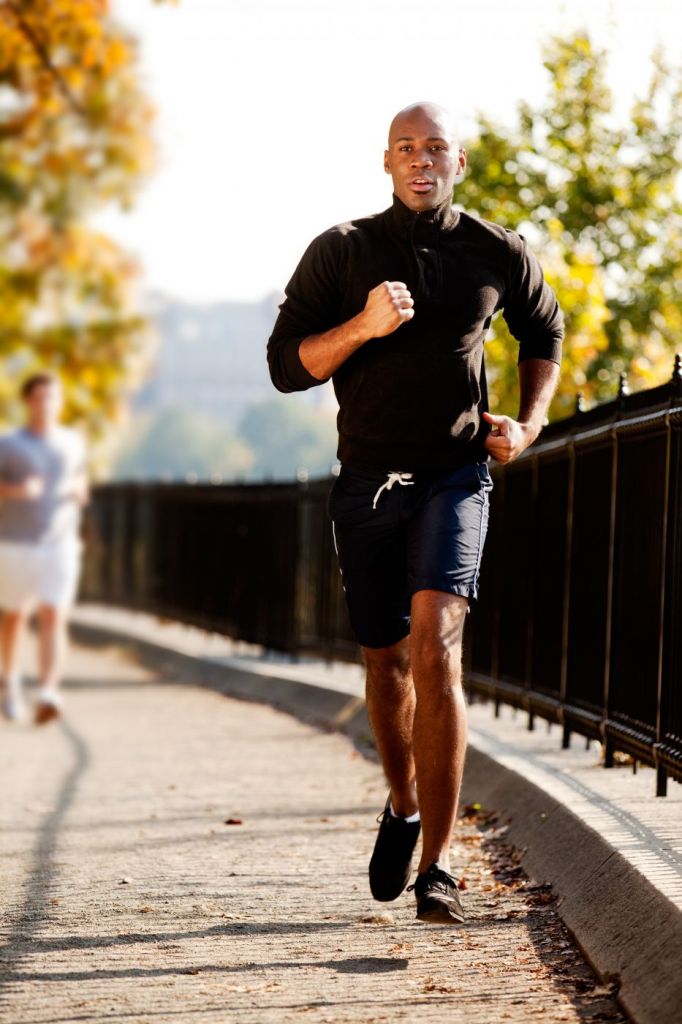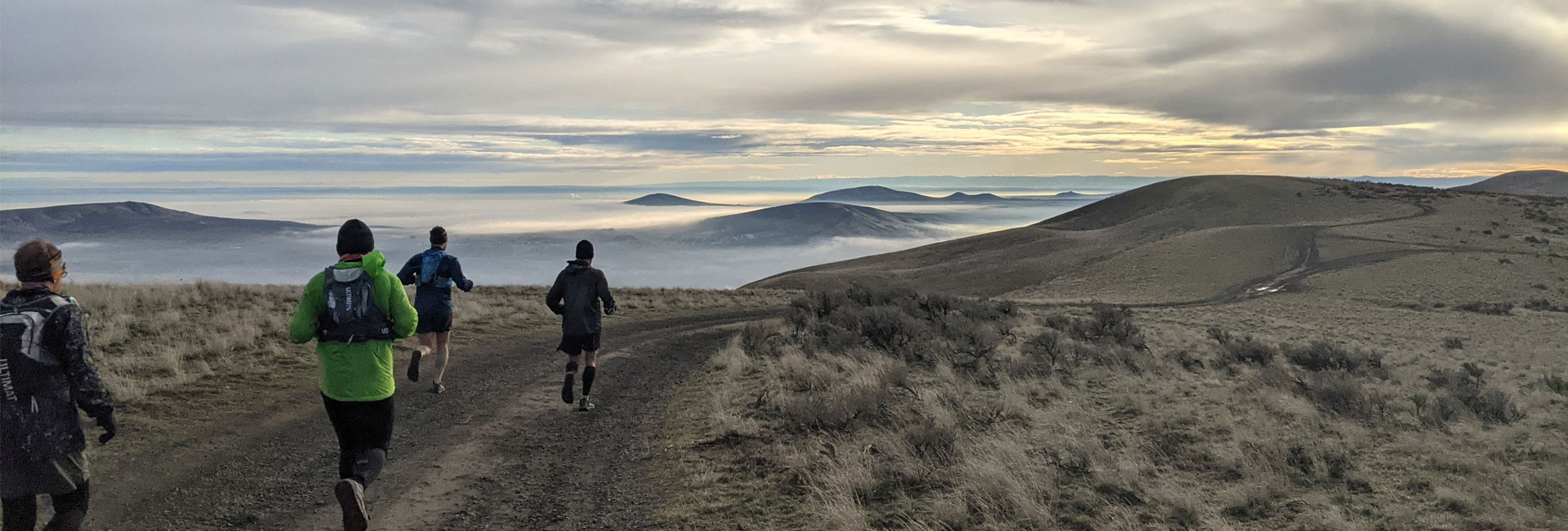Runners, whether they are seasoned athletes or weekend warriors, are typically extremely self-motivated and resilient. As physical therapists, however, we see an abundance of injuries among runners in our clinics.
From Achilles tendon strains and patellofemoral pain syndrome to sprained ankles and shin splints to plantar fasciitis, injuries can cause even seasoned athletes to stop running for a few weeks as they gradually heal and retrain back into shape. Most running injuries, however, are preventable.
For those who want to get out and enjoy the outdoors, walking can be an excellent alternative to running, or can be a great way to build up to running if that’s your end goal. Both walking and running provide excellent exercise, and a great excuse to get outside (optimal for both physical and mental health!). Which you choose is up to you – just remember the best exercise is the one you’ll do regularly! Both lead to healthier hearts, stronger bones, and lower body weights.
Get started with walking.
If you are just starting to become more active outdoors, begin with a simple walking routine. When you first venture out, choose a pathway that’s level and move at a comfortable pace for 10–15 minutes. Take a walk every morning and every afternoon to slowly improve your endurance.
You can progress by either increasing your time to 20–30 minutes in the morning and afternoon or by slowly incorporating hills into your outings. Make sure to maintain a good pace to further improve your cardiovascular capacity. Ensuring the proper progression helps you prevent injuries and opens up more opportunities for walking longer distances across more diverse terrain, or for transitioning to jogging and eventually running … if that’s your goal.
While running burns more calories in a shorter period of time, walking has more benefits than you might think. In a meta-analysis study, walking reduced cardiovascular events by 31 percent, and it cut the risk of dying during the study period by 32 percent. These numbers were equal in both men and women.
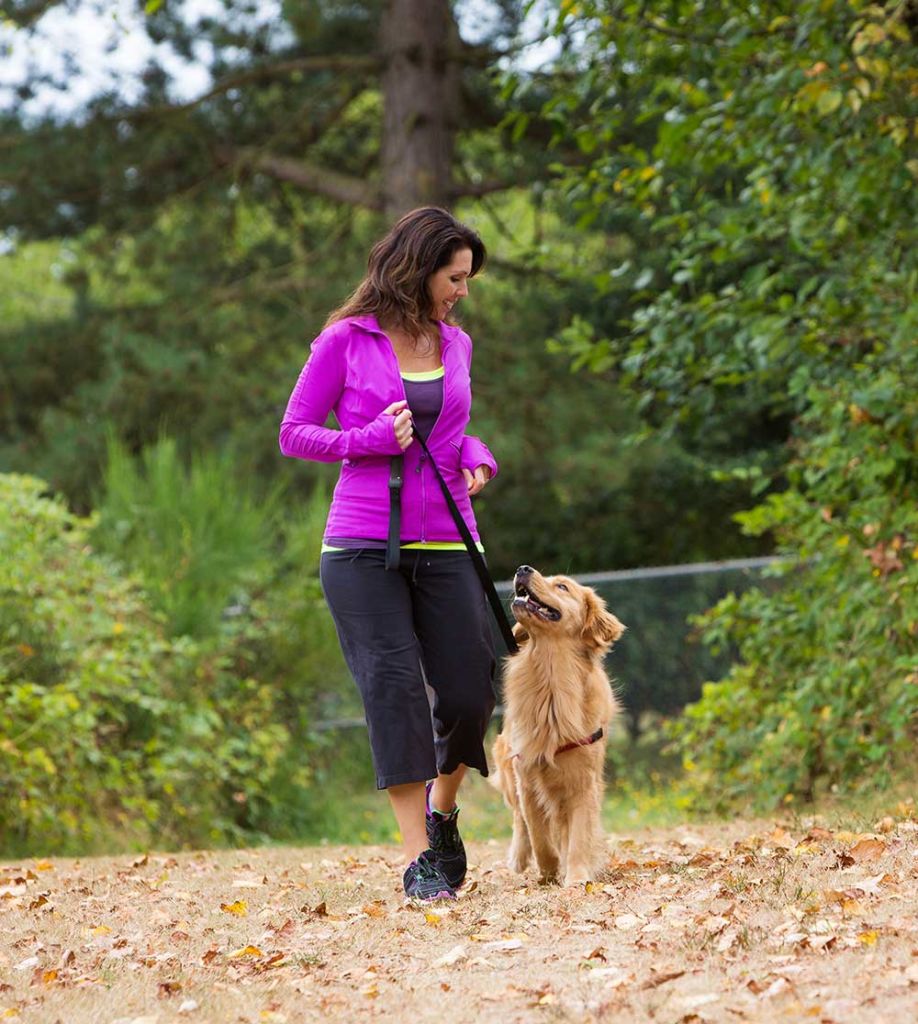
If you decide to work on transitioning from walking to jogging, it is important to slowly progress your routine so that your cardiovascular system adapts as you increase your speed. Try doing a walk/jog pattern at a 2:1 ratio of walking to jogging — walk for two minutes followed by jogging for one minute. Do this for 20 minutes and slowly progress toward a 1:1 ratio of walking to jogging. Try this out for at least two weeks and then progress to adding more time to jogging as you feel better. Eventually, you can progress from jogging to running, but be sure to follow the same slow transition as you do from walking to jogging as you begin your running training.
5 Ways to Avoid Running Injuries
- DYNAMIC WARM-UPS: Maintaining good flexibility aids in the prevention of musculoskeletal injuries and improves sports performance. The days of forcing ourselves into stretches and holding them for prolonged periods, however, are gone. A study published in the Journal of Strength and Conditioning Research concluded that dynamic stretching improved performance in various sports versus static stretching or doing no warmups.
Here are three of our favorite dynamic warm-ups.
Walking knee tucks
Standing on one leg, grab the knee of the opposite leg and gently pull toward your chest until a stretch is felt in the glutes (buttock). Keep head and chest upright. A slight bend in the base leg will help with balance. Hold the stretch for 1–2 seconds. Step forward and pull knee to chest with other leg. Alternate legs as you walk forward.
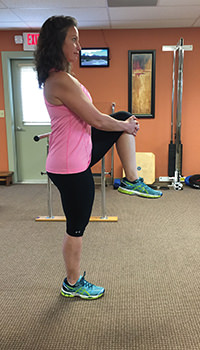
Walking quadriceps pull with overhead reach
Standing on one leg, bend the opposite knee and bring your heel toward your bottom. Grasp the ankle and pull until a gentle stretch is felt in the front of the thigh. Reach the opposite arm overhead, keeping the torso straight. Hold the stretch for 1–2 seconds. Alternate legs as you walk forward.
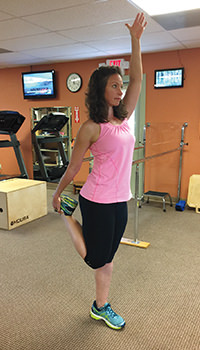
Spiderman with trunk rotation
From push-up position, step forward with one foot so that the knee forms a right angle. Push your hips back and come up on your heel in the front and toes in the back. Drop your hips and raise your opposite arm up while twisting until you feel a slight stretch. Hold the position for 1–2 seconds. Alternate sides for about 2–4 repetitions.
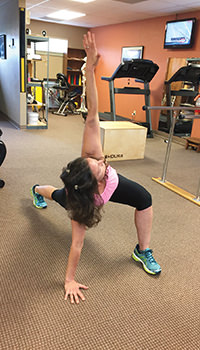
- STRENGTHENING: Performing strengthening and conditioning exercises at least twice a week has been shown to prepare the body for running.
Here are three strengthening moves that produce significant activation of the buttocks muscles, key players in running.
Wall squats — Single leg
Stand with your back and head flat against the wall, with both feet about 1–2 feet away from the wall. Lift your left leg up as shown and slowly lower your body until your right knee is at a right angle like you are sitting on a chair. Hold the position for 2 seconds. Repeat this movement about 8–10 times then switch to the other side. If this is too difficult, you can partially squat the knee that is weight-bearing (before you reach a right angle). If this causes pain or cramping, discontinue the exercise.
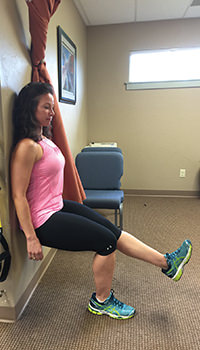
Lateral lunges
This is a good basic drill for beginner’s conditioning and as a warm-up for more advanced athletes. Stand with both feet aligned with your shoulders, parallel to each other and facing forward. Step the right foot to the side and lunge over on that leg with the weight on the right heel (with the foot flat on the floor). This will force the weight to be transmitted to the gluteal muscles on that side. Hold this position for 1–2 seconds and repeat on the other side. Perform alternating side lunges for 8–10 repetitions.
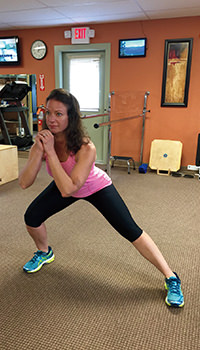
Lateral step-ups
Find a step that is between 6–12 inches in height. Stand with both feet facing toward the step and parallel to each other, step the right foot up onto the step and shift your weight onto the right leg. Rise up, lifting your entire body weight with that leg. You may step the left leg up or keep it off the step for a more challenging exercise. Step the right leg down. Repeat 8–10 times and then perform on the other leg as well. You can increase the challenge by increasing the height of the step.
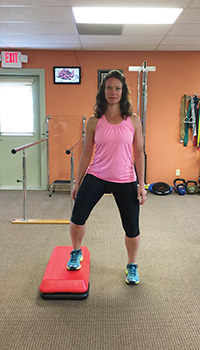
- COOL DOWN: Cool down activities allow your body to prevent tightening after a run or walk and improves circulation after any activity.
Foam rolling is an excellent method to cool down and improve muscle flexibility, thus preventing future injuries.
- RUNNING SHOES: A physical therapist can evaluate your gait and offer advice on choosing the right shoes for your foot and style of walking/running.
If you are a new runner, look for shoes that are comfortable for you rather than buying into the latest trend. Having 2–3 pairs in the rotation is important because each shoe can vary in cushioning, thus creating different types of support for your joints, tendons, and ligaments. Rotating through different shoes throughout the week alters the different forces applied to your body and allows different tendons and ligaments to handle the load. This may help prevent overuse injuries.
- DO NOT IGNORE RECURRING INJURIES: If you continue to experience discomfort, pain, or difficulty when your run, consult with your local physical therapist. PTs are experts who understand movement patterns, body mechanics, and training habits.
People vary in their body types, nutrition, and fitness levels. Remember the old “no pain, no gain” catchphrase? Turns out, that’s a myth! You can focus on injury prevention, but if you do get hurt, a physical therapist can help.
Start your journey to pain-free living today.
Our experts are committed to providing effective, efficient, and compassionate care to help you live a pain-free, active life. Our passion is to help every patient reach their goals on their journey to recovery and optimal performance.

